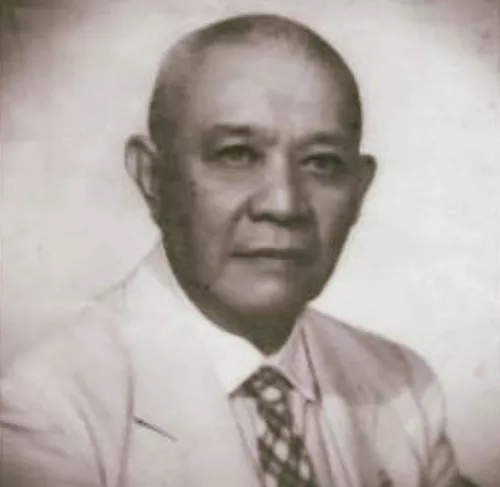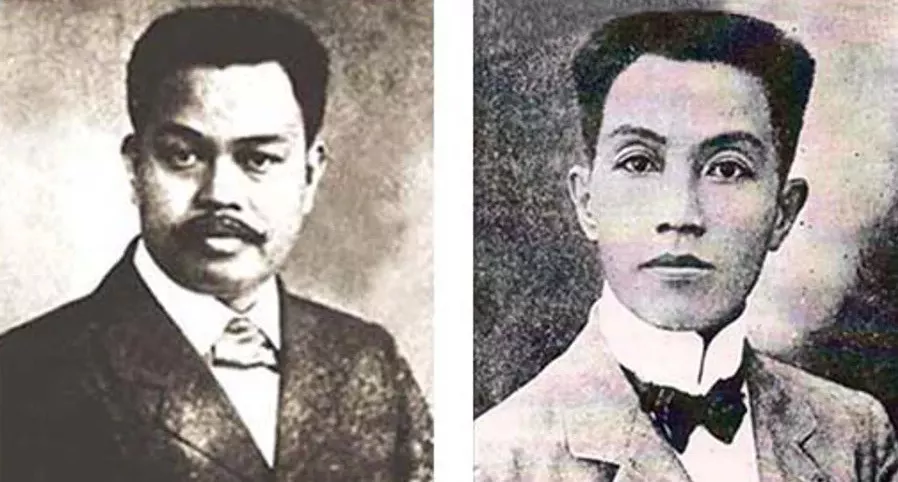The following year, the first telephone service began operating in the country.
Weyler was born in 1838 in Palma de Mallorca, Spain. His distant paternal ancestors were originally Prussians and served in the Spanish army for several generations.[3] He was educated in his place of birth and in Granada.[4] Weyler decided to enter the Spanish army, being influenced by his father, a military doctor.
He graduated from the Infantry School of Toledo at the age of 16.[4] At 20, Weyler had achieved the rank of lieutenant,[4] and he was appointed the rank of captain in 1861.[5] In 1863, he was transferred to Cuba, and his participation in the campaign of Santo Domingo earned him the Laureate Cross of Saint Ferdinand.[5] During the Ten Years' War that was fought between 1868 and 1878, he served as a colonel[5] under General Arsenio Martínez Campos, but he returned to Spain before the end of the war to fight against Carlists in the Third Carlist War in 1873.[2] In 1878, he was made general.[4]
Canary Islands and Philippines
From 1878 to 1883, Weyler served as Captain-General of Canary Islands. In 1888, Weyler was made Governor-General of the Philippines.[2] Weyler granted the petitions of 20 young women of Malolos, Bulacan, to receive education and to have a night school. The women became known as the Women of Malolos. The original petition was denied by the parish priest of Malolos, who argued that women should always stay at home and take care of the family.
Weyler happened to visit Malolos afterward and granted the petition on account of the persistence the women displayed for their petition. José Rizal wrote a letter to the women, upon request by Marcelo H. del Pilar, praising their initiative and sensibility on their high hopes for women's education and progress. In 1895, he earned the Grand Cross of Maria Christina for his command of troops in the Philippines[2] in which he fought an uprising of Tagalogs[6] and conducted an offensive against the Moros in Mindanao.
Spain
On his return to Spain in 1892, he was appointed to command the 6th Army Corps in the Basque Provinces and Navarre, where he soon quelled agitations. He was then made captain-general at Barcelona, where he remained until January 1896. In Catalonia, with a state of siege, he made himself the terror of the anarchists and communists.[3]
Cuba
After Arsenio Martínez Campos had failed to pacify the Cuban Rebellion, the Conservative government of Antonio Cánovas del Castillo sent Weyler out to replace him. That met the approval of most Spaniards, who thought him the proper man to crush the rebellion.[3]
He was made Governor-General of Cuba with full powers to suppress the insurgency (rebellion was widespread in Cuba) and restore the island to political order and its sugar production to greater profitability. Initially, Weyler was greatly frustrated by the same factors that had made victory difficult for all generals of traditional standing armies fighting against an insurgency.
While the Spanish troops marched in regulation and required substantial supplies, their opponents practiced hit-and-run tactics, lived off the land, and blended in with the noncombatant population. He came to the same conclusions as his predecessors as well: to win Cuba back for Spain, he would have to separate the rebels from the civilians by confining the latter to towns and forts protected by loyal Spanish troops. By the end of 1897, General Weyler had divided the long island of Cuba into different sectors and forced more than 300,000 men, women and children into areas nearby cities. By emptying the land of a sympathetic population, and then burning crops, preventing their replanting, and driving away livestock, the Spanish military made the countryside inhospitable to the insurgents.
Weyler's reconcentrado policy made his military objectives easier to accomplish, but it had devastating humanitarian and political consequences. The reconcentrados, separated from their livelihoods in the countryside and poorly housed at close quarters in the tropical climate, suffered greatly from starvation and disease. Death toll estimates range from 150,000 to 400,000 people.[7][8] Much was made of their suffering in the American press where Weyler became known as The Butcher.[9] The wave of negative publicity contributed to an atmosphere conducive to the U.S. declaration of war against Spain two months after the sinking of the USS Maine in 1898. The Spanish Conservative government supported Weyler's tactics wholeheartedly, but the Liberals denounced them vigorously for their toll on the Cuban people.
Similar civilian internment policies were applied in the Second Boer War concentration camps by the British (1900-1902),[7] the United States during the Philippine–American War (1899–1902),[7][10] Germany against the Herero (1904-1907) and later by other governments.[7]




